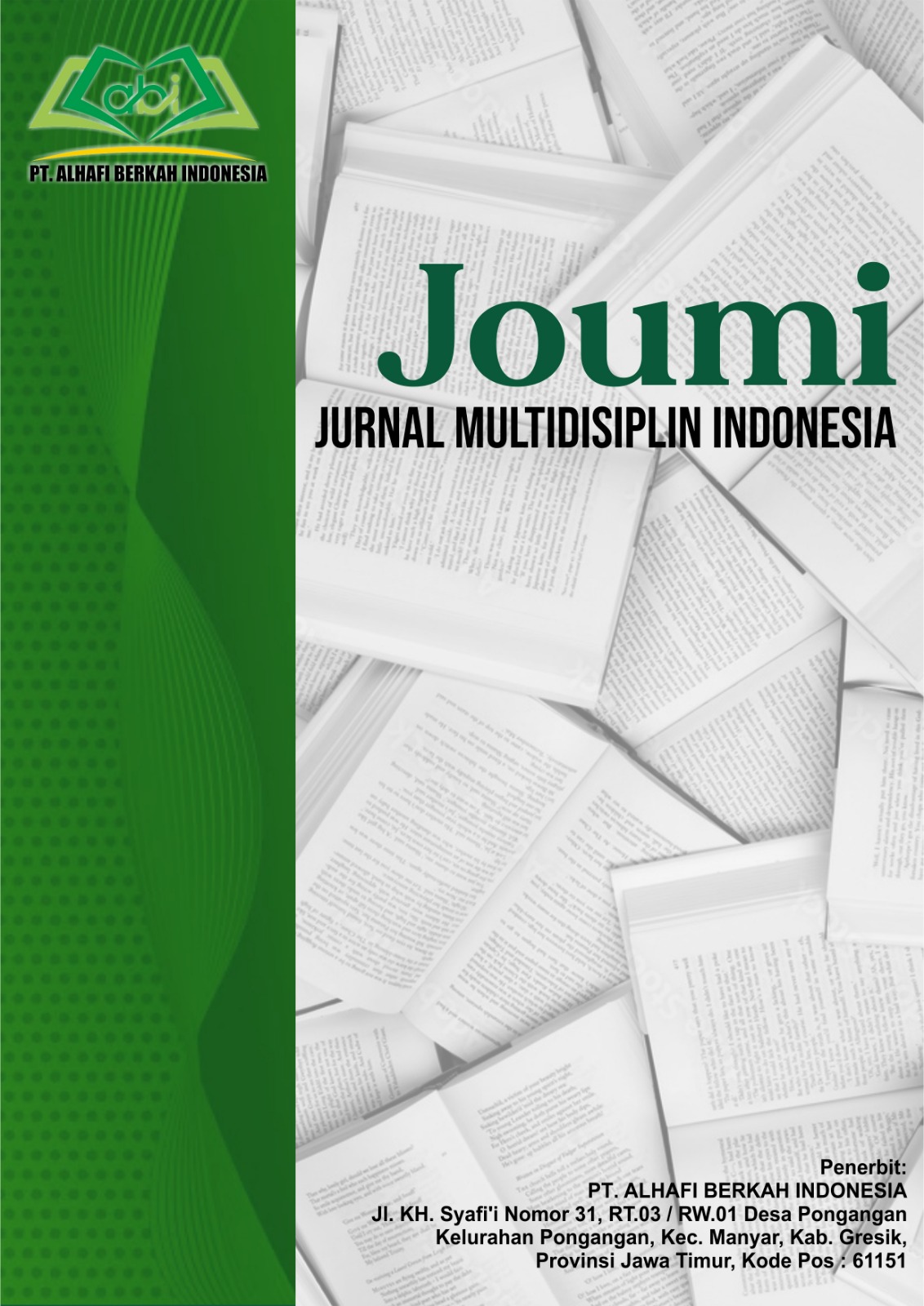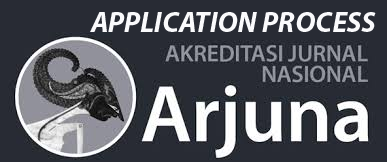The Role of Investment, Tourism Industry and Tourist Visits in Improving the Tourism Sector in Indonesia
DOI:
https://doi.org/10.62007/joumi.v3i2.466Keywords:
Investment, Tourism Industry, Tourist Visits, Tourism SectorAbstract
This study looks at how investment, the travel and tourism sector, and visitor numbers affect Indonesia's tourism business. Panel data comprising 41 districts/cities in the provinces of West Java, Yogyakarta, and Bali from 2014 to 2023 is analyzed using the Pooled Least Squares approach. The fixed effect model used to ascertain the impact of investment, the tourism industry, and tourist visits on Indonesia's tourism sector is displayed via linear regression analysis of panel data. The study's findings show that traditional hotels currently get the majority of investments in the tourism sector, while sustainable tourism wants environmentally friendly hotels and expects environmentally friendly tourism practices and regenerative concepts. The tourism sector in Indonesia needs to improve the quality of infrastructure, information technology, and non-leisure resources. Utilizing the wealth of natural resources, setting new standards for tourism excellence, contributing to economic growth, as well as preserving Indonesia's natural and cultural heritage are strategies that can be carried out to attract a lot of investment aimed at addressing the gap in tourism infrastructure.
References
Aboagye, S., & Paul Adjei Kwakwa, P., A. (2023). The role of international tourism, trade openness and renewable energy in the financial development of selected African countries. Research in Globalization, 7 (2023).
Adeleye, B., N. (2023). Re-examining the tourism-led growth nexus and the role of information and communication technology in East Asia and the Pacific. Helityon 9 (2023).
Agarwal, R., Campbell, B. A., Franco, A. M., & Ganco, M. (2016). What do I take with me? The mediating effect of spin-out team size and tenure on the founder–firm performance relationship. Academy of Management Journal, 59(3), 1060–1087
Akrong, K. K. (2019). Pro-poor tourism: Critical perspective and implications for future research. Journal of Tourism and Hospitality Management, 7(1), 23–35
Alam, M. S., & Paramati, S. R. (2017). The dynamic role of tourism investment on tourism development and CO2 emissions. Annals of Tourism Research, 66, 213-215
Anggarini, D. T. (2021). Upaya Pemulihan Industri Pariwisata Dalam Situasi Pandemi Covid19. Jurnal Khatulistiwa Informatika, 8(1), 22–31.
Annamalaha, S., Paramana, P., Ahmedb, S., Dassc, S., Sentosad, I., Perthebana, T., R., Shamsudine, F., Kadirf, B., Aravindang, K., L., Ramanh, M., Hoii, W., C. (2023). The role of open innovation and a normalizing mechanism of social capitalin the tourism industry. Journal of Open Innovation: Technology, Market, and Complexity 9 (2023).
Bernard, K., & Cook, S. (2014). K Luxury tourism investment and flood risk: Case study onunsustainable development in Denarau island resort in Fiji. International Journal of Disaster Risk Reduction (2014).
Biorn, E. (2017). Econometrics of Panel Data: Methods and Aplications. Oxford University Press: United Kingdom.
Brilhante, M., F & Rocha, M., L. (2023). COVID-19 pre-pandemic tourism forecasts and post-pandemic signs of recovery assessment for Portugal. Research in Globalization 7 (2023).
Camilleri, M.A., 2018. Market segmentation, targeting and positioning. Travel Marketing, Tourism Economics and the Airline Product. Springer, Cham, Switzerland, pp. 69–83.
Chen, P., Nutteera, P., Yan, Y., & Chai, C., T. (2023). Research on driving factors and mechanism of Minority Village tourism development in Guizhou Province, China. Heliyon 9. (2023).
Craigwell, R., & Moore, W. (2007). Foreign direct investment and tourism in SIDS: Evidence from panel causality tests. Tourism Analysis, 13(4), 427–432.
Cró, S., & Martins, A., S. ( 2020). Foreign Direct Investment in the tourism sector: The case of France. Tourism Management Perspectives 33 (2020).
Croes, R., Ridderstaat, J., Bak, M., & Zientara, P. (2021) Tourism specialization, economic growth, human development and transition economies: The case of Poland. Tourism Management 82 (2021).
Demir, E., Gozgor, G., & Paramati, S., R. (2020). To what extend economic uncertainty effects tourism investments? Evidence from OECD and non-OECD economies. Tourism Management Perspectives 36 (2020).
Diekmann, A., McCabe, S., & Ferreira, C., C. (2018). Social Tourism, Research Advances but stasis in policy bridging the divide. Journal of policy research in tourism leisure and events, (10,3) 181-188.
Ding, C.., Gao, X., & Xie, Z. (2024). Analysing the differential impact of the COVID-19 pandemic on the resilience of the tourism economy: A case study of the Chengdu-Chongqing urban agglomeration in China. Journal Pre-proof (2024).
Dunn, H., & Dunn, L. (2002). People and tourism: Issues and attitudes in the Jamaican hospitality industry. Kingston: Arawak Publications.
Greene, W. H. (2018). Econometric Analysis, eighth edition: Pearson Education, Inc.
Gujarati, D. (2012). Econometrics by Example: Palgrave Macmillan
Hazari, B. R., & Sgro, P. M. (2015). Tourism and growth in a dynamic model of trade. Tourism, trade and national welfare (pp. 185–195). Emerald Group Publishing Limited
Li, X., Huang, S., & Song, C. (2017). China's outward foreign direct investment in tourism. Tourism Management 59 (2017).
Liang, A.R.D., (2022). Consumers as co-creators in community-based tourism experience: Impacts on their motivation and satisfaction. Cogent Business & Management 9 (1), 2034389.
Lin, M., Zhang, X., Ng, B. C. S., & Zhong, L. (2020). To empower or not to empower? Multi-level effects of empowering leadership on knowledge hiding. International Journal of Hospitality Management, 89, 102540.
Nguyen, C., N., Hoang, G., & Luu, T., T. (2023). Frontline employees' turnover intentions in tourism and hospitality sectors: A systematic literature review and research agenda. Tourism Management Perspectives 49 ( 2023).
Page, S. J., & Connell, J. (2020). Urban tourism. Tourism, January 2012, 443–465.
Paramati, S., R., Alam, M., S., & Chen, C., F. (2017). The Effect of Tourism on Economic Growth and CO2 Emissons: A Comparison between developed and developing economies. Journal of Travel Research, 56 (6), 712-724
Proença, S., & Soukiazis, E. (2008). Tourism as an economic growth factor: a case study for Southern European countries. Tourism Economics, 14(4), 791–806.
Qamruzzaman (2023). Clean energy-led tourism development in Malaysia: Do environmental degradation, FDI, Education and ICT matter? . Heliyon 9 (2023).
Ratten, V., (2022). Cultural conditions and heritage tourism in Southeast Asia. Driving Entrepreneurship in Southeast Asia. Routledge, pp. 31–43.
Selvanathan, S., Selvanathan, E., A., & Viswanathan, B. (2012). Causality between Foreign Direct Investment and Tourism. empirical Evidence from India. Tour Anal 17 91) 91-98.
Sirima, A., & Backman, K. F. (2013). Communities’ displacement from national park and tourism development in the Usangu Plains, Tanzania. Current Issues in Tourism, 16 (7–8), 719–735.
Sokhanvar, A. ( 2019). Does foreign direct investment accelerate tourism and economic growth Twithin Europe. Tourism Management Perspectives (2019).
Stauvermann, P., & Kumar, R., R. ( 2017). Productivity growth and income in the tourism sector: Role of tourism demand and human capital investment. Tourism Management 61 (2017).
Su, L., Lian, Q., & Huang, Y. (2020). How do tourists’ attribution of destination social responsibility motives impact trust and intention to visit? The moderating role of destination reputation. Tourism Management, 77, Article 103970.
Suwena, I. K., & Widyatmaja, I. G. N. (2010). Pengetahuan Dasar Ilmu Pariwisata. Pustaka Larasan.
Tang, S., Selvanathan, E. A., & Selvanathan, S. (2007). The relationship between foreign direct investment and tourism: Empirical evidence from China. Tourism Economics, 13(1), 25–39.
Tomohara, A. (2015). Japan's tourism-led foreign direct investment inflows: An empirical study. Economic Modelling (2015).
Wang, M. (2009). Manufacturing FDI and economic growth: Evidence from Asian economies. Applied Economics, 41(8), 991–1002.
Wahyuni, P., I., Muliawan, I., W., Rangan, P., R., Sahabuddin, A., A., Dana, G., W., P., Tumpu, M., Mabui, D., S., S., Kusuma, M., A., Kurniawan, A., Sinarta, I., N. (2021). Investasi Pariwisata Indonesia. Makasar: CV. Tohar Media.
Yakup, A. P., & Haryanto, T. (2019). PENGARUH PARIWISATA TERHADAP PERTUMBUHAN EKONOMI DI INDONESIA. Bina Ekonomi: Majalah Ilmiah Fakultas Ekonomi Universitas Katolik Parahyangan, 23(2), 39–47. https://doi.org/10.26593/be.v23i2.3266.39-47
Zhong, L., Sun, S., Law, R., Li, X., Yang, L., (2022). Perception, reaction, and future development of the influence of COVID-19 on the hospitality and tourism industry in China. Int. J. Environ. Res. Public Health 19 (2), 991
Downloads
Published
How to Cite
Issue
Section
License
Copyright (c) 2025 Muhamad Syahiddin, Sumaryoto Sumaryoto , Yolanda Yolanda

This work is licensed under a Creative Commons Attribution-ShareAlike 4.0 International License.










